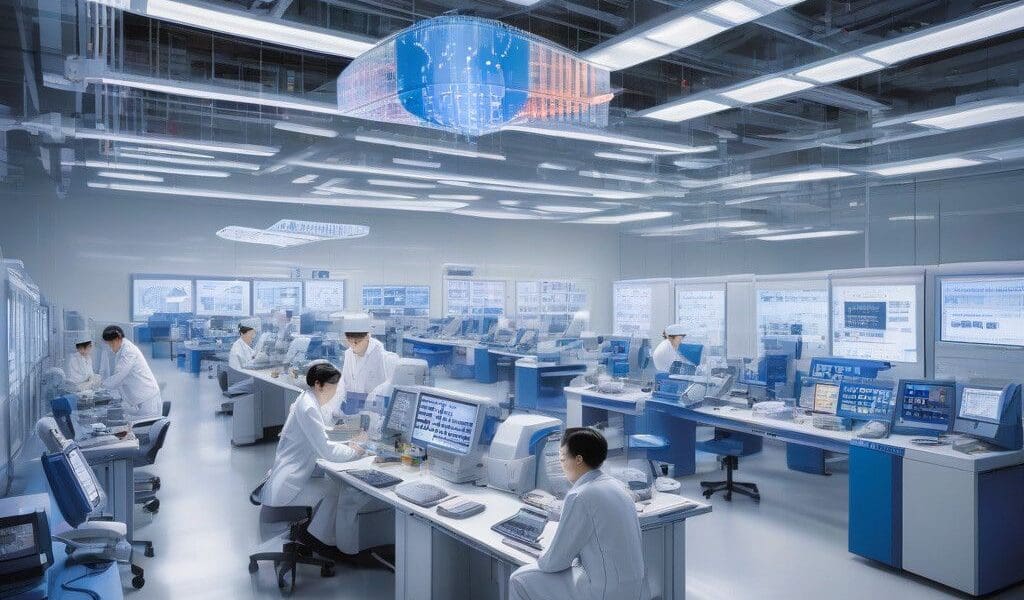The Evolving Landscape of Semiconductor Investment: EU, Japan, and South Korea Leading the Charge
In the contemporary digital ecosystem, the semiconductor industry stands as a cornerstone of technological advancement, underpinning innovations from artificial intelligence to electric vehicles. The recent surge in global semiconductor sales, recording a 23.2% year-over-year growth in Q3 2024, signals a robust demand across sectors. Driven by needs in AI, big data, and green technologies, countries are responding with substantial investments aimed at boosting local chip manufacturing capabilities.
The European Union is setting a compelling example, with a focused initiative on photonic technology. A commitment of €133 million has been earmarked to establish a photonic integrated circuit (PIC) pilot line in the Netherlands, projected to be operational by 2025. This strategic investment underscores the EU’s ambition to enhance its stature within the photonic chip market, essential for efficient data transmission critical for cloud computing and artificial intelligence applications. By leveraging advanced photonics, the EU aims to create a more resilient semiconductor supply chain that can mitigate risks associated with global market fluctuations.
Conversely, Japan is making substantial strides to reinforce its semiconductor and AI domains with a groundbreaking ¥10 trillion (approximately $65 billion) investment slated for 2030. This coalition, primarily involving partnerships between Rapidus, IBM, and Belgium’s Imec, is directed towards innovation and increased production capacity within the semiconductor landscape. The Japanese government views this as an opportunity to enhance its competitive edge and to stimulate domestic economic growth, fostering an environment conducive to technological advancement.
Meanwhile, on the other side of the Pacific, South Korea is enacting legislative changes intended to bolster its semiconductor sector through a proposed Semiconductor Special Act. This legislation includes financial incentives targeted at manufacturers, coupled with exemptions that expand the workweek for critical operations. Notably, a planned ₩26 trillion funding initiative coupled with an ₩800 billion support fund aims to create a conducive ecosystem for semiconductor research and production. This proactive approach reflects South Korea’s commitment to not just participate in but lead in the global semiconductor race.
Each of these initiatives not only highlights the countries’ governmental will to strengthen their domestic semiconductor industries but also reveals a collective understanding of the geopolitical landscape surrounding advanced technology. The reverberations of these investments are likely to extend beyond national borders, influencing global semiconductor supply chains, partnerships, and competitive dynamics.
Moreover, as countries enhance their semiconductor capabilities, the focus on sustainability and efficiency cannot be overlooked. In the wake of climate change and resource scarcity, the integration of sustainable practices within semiconductor manufacturing becomes paramount. For instance, companies are increasingly adopting environmentally-friendly materials and processes that minimize waste and energy consumption. Moreover, advancements in the efficiency of semiconductor devices themselves align with global targets for reducing carbon footprints across manufacturing sectors.
Collaboration among nations, companies, and research institutions represents another pivotal aspect of this investment landscape. As competitors may often seem like rivals, the shared challenges presented by global supply chain vulnerabilities suggest that strategic alliances can foster resilience. Initiatives like the EU’s plans for a unified semiconductor policy encourage cooperation among member states to mobilize resources effectively and facilitate technology transfer and knowledge sharing between industries.
The semiconductor investment race is not merely about economic competition; it reflects philosophical alignments towards shaping the future of technology. Nations recognize that the ability to innovate within this sector directly correlates to national security, economic stability, and technological sovereignty. As governments pledge billions to advance semiconductors, the results of these investments will likely redefine the power dynamics in tech-driven economies.
In conclusion, as we witness the push by the EU, Japan, and South Korea towards semiconductor growth, it becomes evident that the landscape is ripe for innovation, collaboration, and sustained development. With technology increasingly intertwined in daily life, understanding the socio-economic implications of these investments is crucial. The move toward strengthening local semiconductor industries not only fulfills immediate technological needs but also ensures long-term economic resilience and sustainability in an unpredictable global market.








